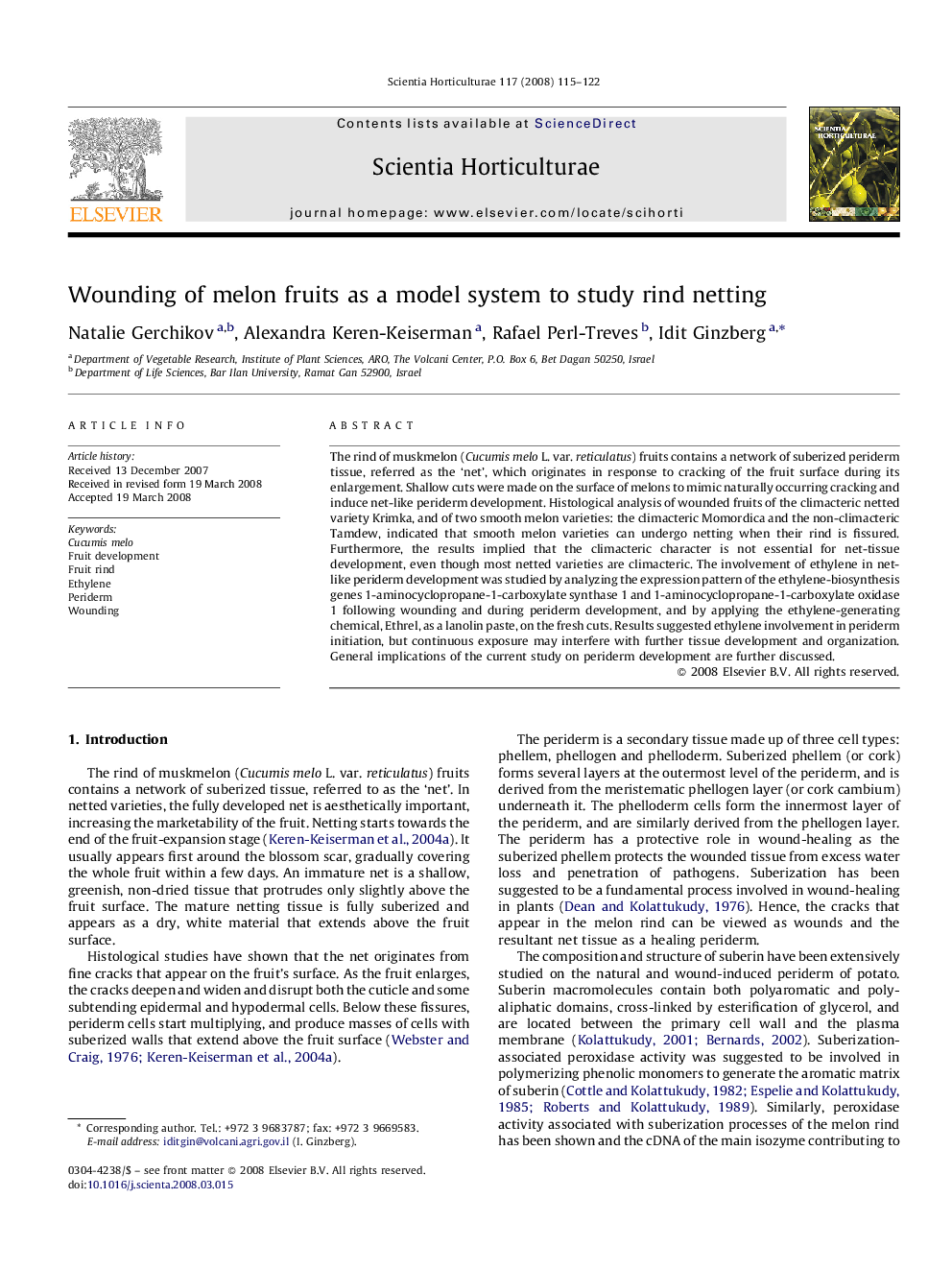| Article ID | Journal | Published Year | Pages | File Type |
|---|---|---|---|---|
| 4569356 | Scientia Horticulturae | 2008 | 8 Pages |
Abstract
The rind of muskmelon (Cucumis melo L. var. reticulatus) fruits contains a network of suberized periderm tissue, referred as the 'net', which originates in response to cracking of the fruit surface during its enlargement. Shallow cuts were made on the surface of melons to mimic naturally occurring cracking and induce net-like periderm development. Histological analysis of wounded fruits of the climacteric netted variety Krimka, and of two smooth melon varieties: the climacteric Momordica and the non-climacteric Tamdew, indicated that smooth melon varieties can undergo netting when their rind is fissured. Furthermore, the results implied that the climacteric character is not essential for net-tissue development, even though most netted varieties are climacteric. The involvement of ethylene in net-like periderm development was studied by analyzing the expression pattern of the ethylene-biosynthesis genes 1-aminocyclopropane-1-carboxylate synthase 1 and 1-aminocyclopropane-1-carboxylate oxidase 1 following wounding and during periderm development, and by applying the ethylene-generating chemical, Ethrel, as a lanolin paste, on the fresh cuts. Results suggested ethylene involvement in periderm initiation, but continuous exposure may interfere with further tissue development and organization. General implications of the current study on periderm development are further discussed.
Related Topics
Life Sciences
Agricultural and Biological Sciences
Horticulture
Authors
Natalie Gerchikov, Alexandra Keren-Keiserman, Rafael Perl-Treves, Idit Ginzberg,
